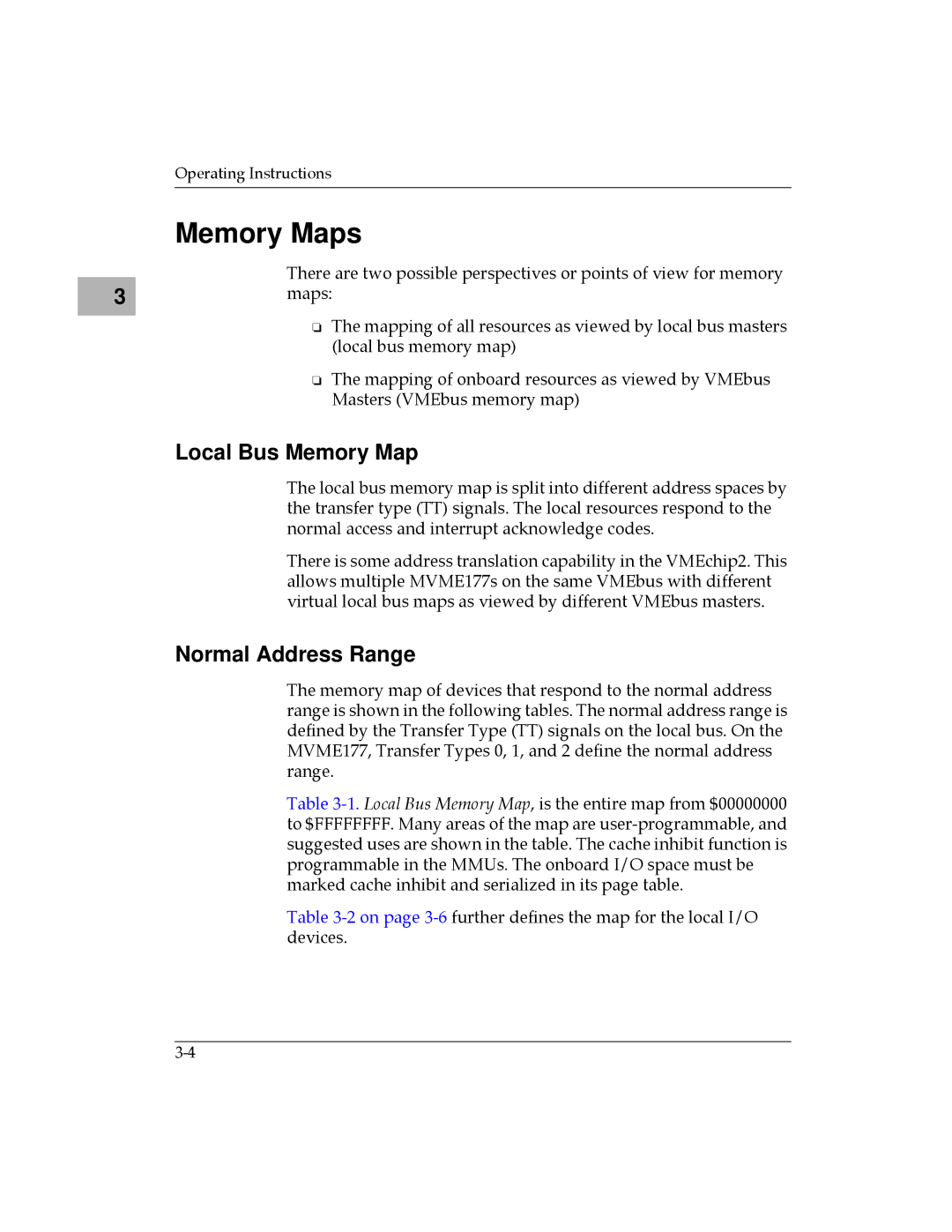
3 |
Operating Instructions
Memory Maps
There are two possible perspectives or points of view for memory maps:
❏The mapping of all resources as viewed by local bus masters (local bus memory map)
❏The mapping of onboard resources as viewed by VMEbus Masters (VMEbus memory map)
Local Bus Memory Map
The local bus memory map is split into different address spaces by the transfer type (TT) signals. The local resources respond to the normal access and interrupt acknowledge codes.
There is some address translation capability in the VMEchip2. This allows multiple MVME177s on the same VMEbus with different virtual local bus maps as viewed by different VMEbus masters.
Normal Address Range
The memory map of devices that respond to the normal address range is shown in the following tables. The normal address range is defined by the Transfer Type (TT) signals on the local bus. On the MVME177, Transfer Types 0, 1, and 2 define the normal address range.
Table
Table
